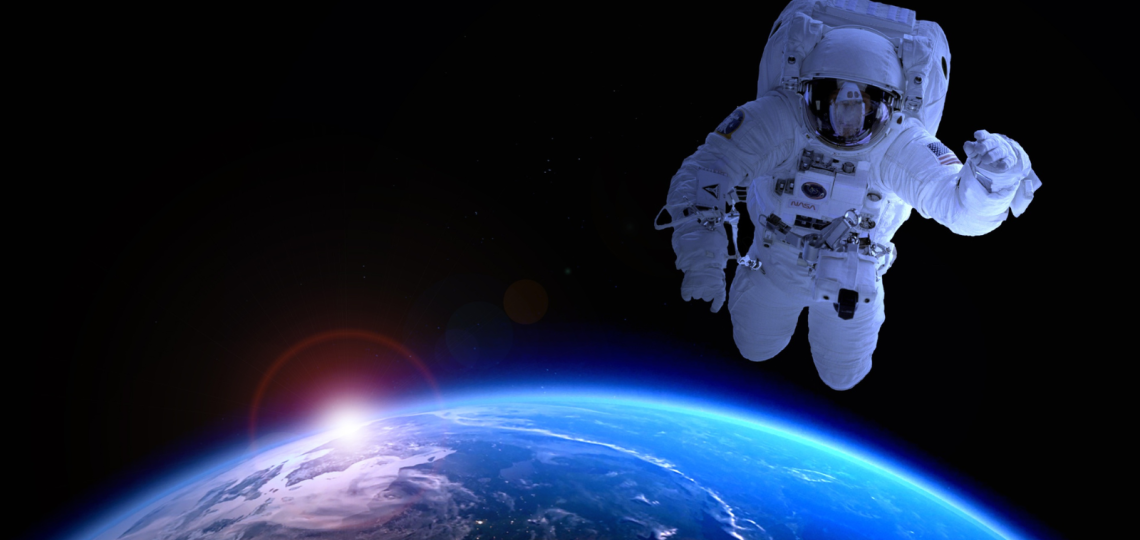
For years, TRISH has supported research projects and studies that aim to solve the challenges of human exploration in space. To understand how to solve those challenges, we first must know the risks to human health during space travel. Understanding these risks and finding solutions or countermeasures is essential for a return to the moon in NASA’s Artemis missions and, eventually, crewed missions to Mars.
Bones
Without the need to carry the load of Earth’s gravity, the bones in the lower part of your body (legs, hips, and spine) are doing less work. The decrease in load bearing results in your bones losing their density; this also increases the mineral content elsewhere in your system, leading to more problems like increased urinary calcium and renal stones.
Muscles
With bones and muscles, it’s use it or lose it. Astronauts experience decreased muscle mass, strength, and endurance because moving around requires reduced work from the legs and back. As a result, the muscles can begin to weaken or atrophy. To help combat this, astronauts aboard the International Space Station (ISS) have a strict exercise regime. However, muscles in a poor state could lead to fall-related injuries upon return to Earth or make those first steps on Mars much harder to do.
Neurological
If you’ve been on Earth your whole life, your body will require some time to get used to microgravity. Your brain has a complex, integrated set of neural circuits that allow us to maintain balance, stabilize vision, and orient your location and direction. The brain receives and interprets information from the eyes, inner ear vestibular organs, and the deep senses from muscles and joints. However, lacking gravity, the data inputs from muscles and internal organs are different from what is expected. For example, the inner ear receives conflicting inputs compared to what is expected on Earth.
What does this look and feel like? Early in space missions, astronauts can experience disorientation, space motion sickness, and a loss of sense of direction, making completion of even basic tasks difficult. In an emergency, decreased sensorimotor function and postural stability could be dangerous.
Once the astronaut returns to Earth, they are immediately forced to readjust again, back to Earth’s gravity, and can experience issues standing, stabilizing their gaze, walking, and turning. For their safety, returning astronauts are often placed in a chair immediately upon return to Earth.
Eyes
The eyes also experience their own set of changes when in space, especially during long-duration missions. Changes include increased globe flattening, optic disc edema, and vision changes. One of the most recognized issues associated with the eyes in space is Space-Associate Neuro-ocular Syndrome (SANS), which causes swelling in the back of the eye. This collection of symptoms will need to be addressed before we can safely book a three-year mission to Mars.
Cardiovascular
In space, astronauts may face decreases in blood volume, orthostatic tolerance, and aerobic capacity while also experiencing increased arrhythmias. Although the cardiovascular system functions well in space, the body does not require as much work from the heart (still a muscle, after all) in microgravity. Over time, this could lead to deconditioning and a decrease in the size of the heart. On return to Earth and gravity, a smaller and weaker heart could overextend itself. Finally, there is also a concern that space radiation (described below) may affect endothelial cells in the lining of blood vessels, which might initiate or accelerate coronary heart disease.
Performance
The ability to perform work is one of the biggest concerns spaceflight agencies and companies have of their astronauts and space explorers. Factors like being confined in a small space with other people, high work demands, team and crew issues, the loss of the 24-hour day/light cycle leading to fatigue, and stress can all lead to decreased cognitive function. These could pile up to jeopardize a mission. Scientists and researchers are exploring many ways to protect astronaut bodies and minds to preserve their performance in space.
Gastrointestinal System
Much like the rest of the systems in the body, the gastrointestinal system feels the effects of a loss of gravity. Without gravity to help move food through your GI tract, the intestinal system can decrease motility. Not to mention, disposal of waste is certainly a bit different in space.
Environmental Effects
Being inside a capsule or space station for long periods can also impact your body. For example, noise exposure during launch, mid-flight, and landing can cause hearing loss. Not standing on your feet causes them to lose callouses and become soft from disuse and less sensitive to pressure variations. Instead, astronauts on the International Space Station (ISS), have developed callouses on top of their feet from using footholds on the station. Space explorers may also experience skin irritation from microbial growth combined with a lowered immune system.
Space Radiation
While on Earth, the atmosphere protects humans from harmful space radiation. Beyond Low Earth Orbit (LEO), space radiation can pose a significant risk to space explorers. They can experience radiation sickness, central nervous system effects, degenerative diseases, and most notably, an increased lifetime risk of cancer. On Earth, we’re exposed to a relatively minimal amount of radiation on any given day– but in space, astronauts are exposed to about 100 times that. That could be anywhere between 150 to 6,000 chest x-rays. Calculate the average radiation dose you might be exposed to here.
Learn more about TRISH Radiation projects.
Learn more about spaceflight health hazards from the NASA Human Research Program, and explore the Human Research Roadmap to understand the approach and research planned to address these risks.








